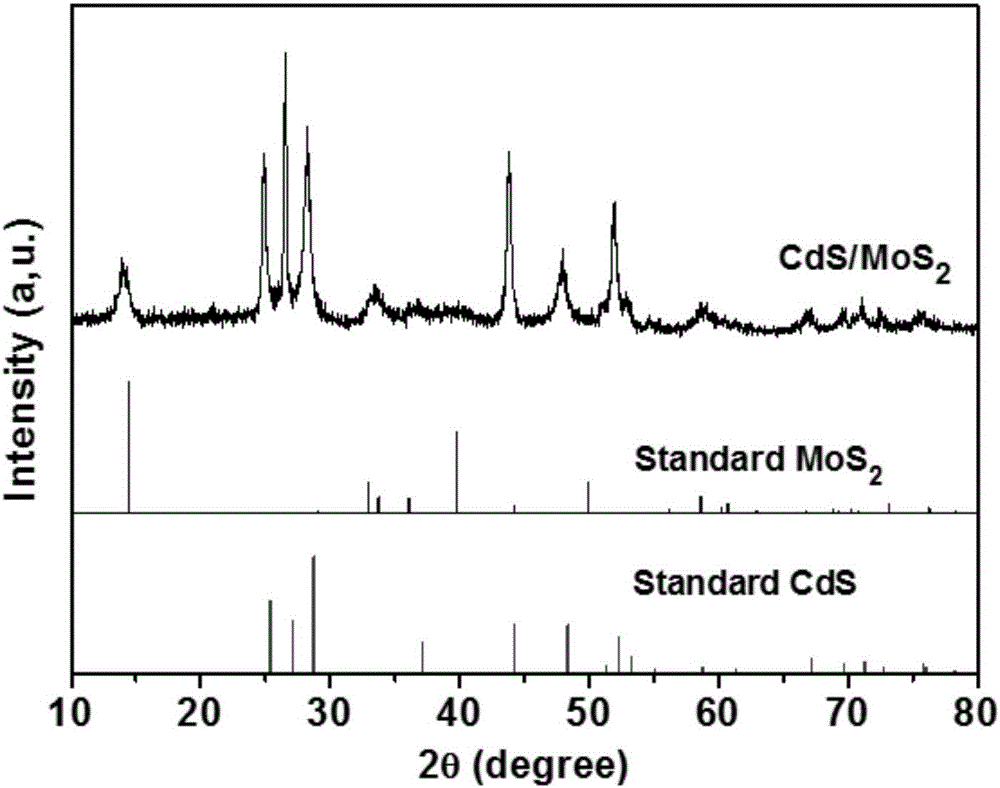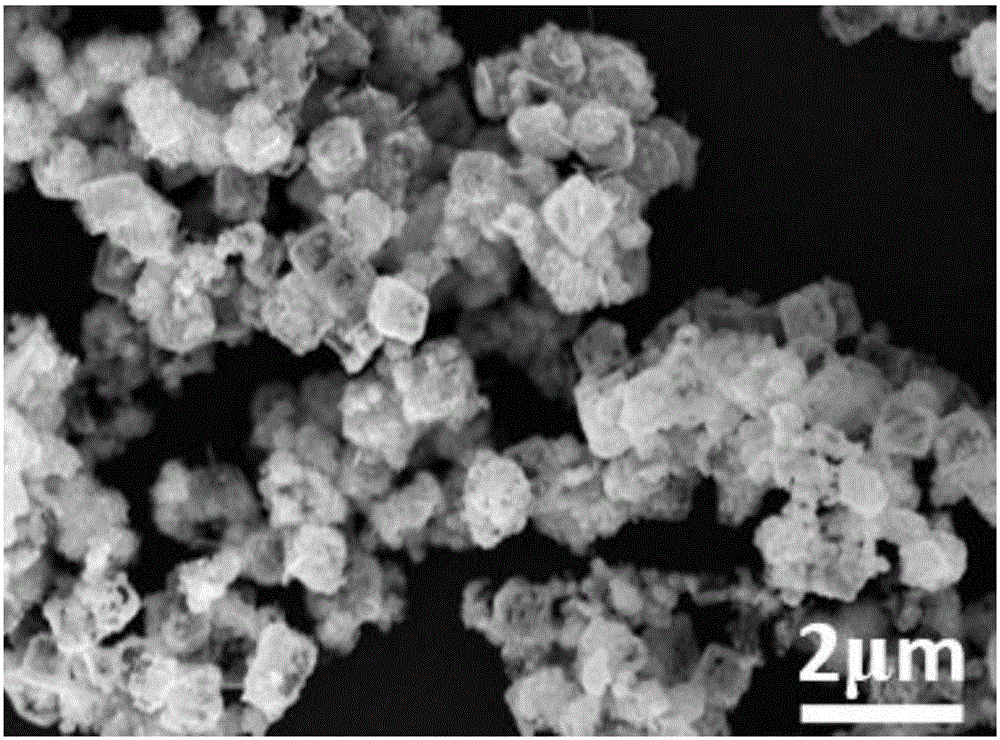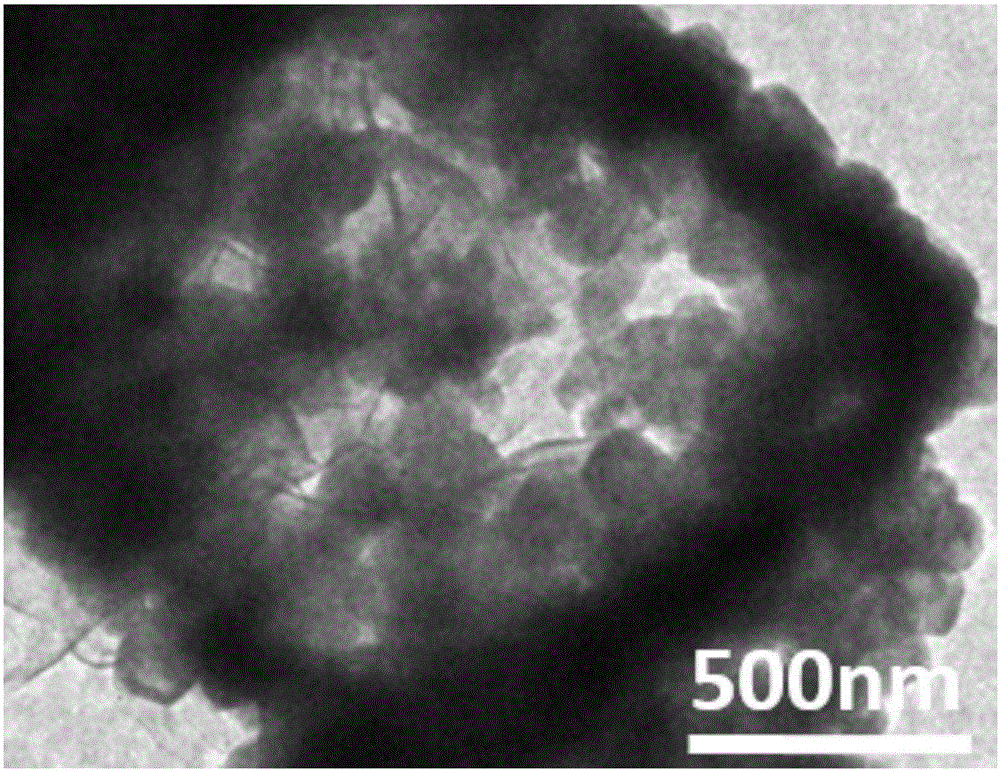Method for preparing CdS/MoS2 composite hollow-block photocatalyst
A photocatalyst and block technology, applied in the direction of physical/chemical process catalysts, chemical instruments and methods, catalyst activation/preparation, etc., to achieve the effect of complete crystallization and good dispersion
- Summary
- Abstract
- Description
- Claims
- Application Information
AI Technical Summary
Problems solved by technology
Method used
Image
Examples
Embodiment 1
[0014] Example 1CdS / MoS 2 Preparation of Composite Photocatalyst
[0015] Choose 300mg cadmium carbonate, sodium molybdate and 500mg thiourea, the addition amount of sodium molybdate is 1:0:4, 1:0.15:4, 1:0.3:4, 1:0.6:4 according to the ratio of the amount of substances respectively , 1:1.2:4, 1:1.4:4 were added to obtain 6 groups of samples respectively dissolved in 35ml deionized water, magnetically stirred, and hydrothermally reacted at 220 degrees Celsius for 24 hours. After the reaction was completed, the obtained products were successively deionized Wash with water and ethanol, filter, and dry in a constant temperature drying oven at 60°C.
Embodiment 2
[0016] Example 2CdS / MoS 2 Characterization and Analysis of Heterojunction Composite Photocatalysts
[0017] Such as figure 1 As shown, it can be seen from the figure that there are CdS and MoS 2 There are no other impurity phases in the diffraction peaks, indicating that the composite structure we obtained is of high purity.
[0018] Such as figure 2 As shown, the evenly distributed hollow square structure can be seen from the figure.
[0019] Such as image 3 As shown, it can be seen from the figure that the MoS 2 Nanosheets were successfully coated on the surface of CdS hollow squares to form a heterostructure.
[0020] Such as Figure 4 As shown in the figure, it can be clearly seen that the CdS / MoS 2 The composite photocatalyst has excellent photocatalytic hydrogen production performance. When the mass ratio of cadmium carbonate, sodium molybdate and thiourea is 1:1.2:4, the photocatalytic hydrogen production efficiency is the highest.
Embodiment 3
[0021] Example 3CdS / MoS 2 Visible light catalytic activity experiments of heterojunction composite photocatalysts
[0022] (1) Weigh CdS / MoS 2 Put 100 mg of composite photocatalyst in a photocatalytic hydrogen production reactor, add 100 ml of water, and 10 ml of lactic acid and stir for 20 minutes.
[0023] (2) The amount of hydrogen gas generated was measured every hour by gas chromatography.
[0024] (3) by Figure 4 It can be seen that the prepared composite photocatalyst has excellent visible light catalytic activity, and the hydrogen production performance of the composite sample is higher than that of pure CdS.
PUM
 Login to View More
Login to View More Abstract
Description
Claims
Application Information
 Login to View More
Login to View More - R&D
- Intellectual Property
- Life Sciences
- Materials
- Tech Scout
- Unparalleled Data Quality
- Higher Quality Content
- 60% Fewer Hallucinations
Browse by: Latest US Patents, China's latest patents, Technical Efficacy Thesaurus, Application Domain, Technology Topic, Popular Technical Reports.
© 2025 PatSnap. All rights reserved.Legal|Privacy policy|Modern Slavery Act Transparency Statement|Sitemap|About US| Contact US: help@patsnap.com



